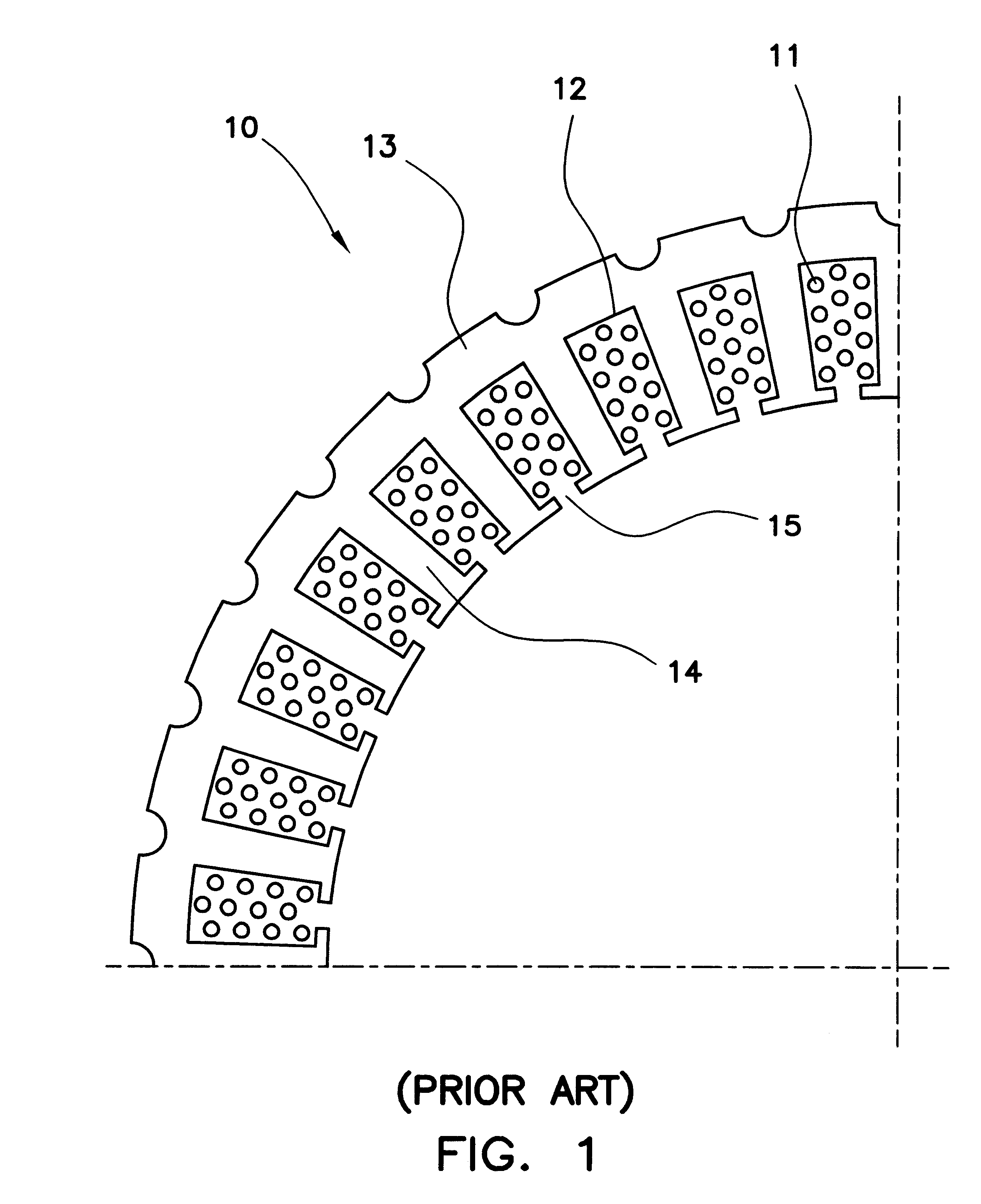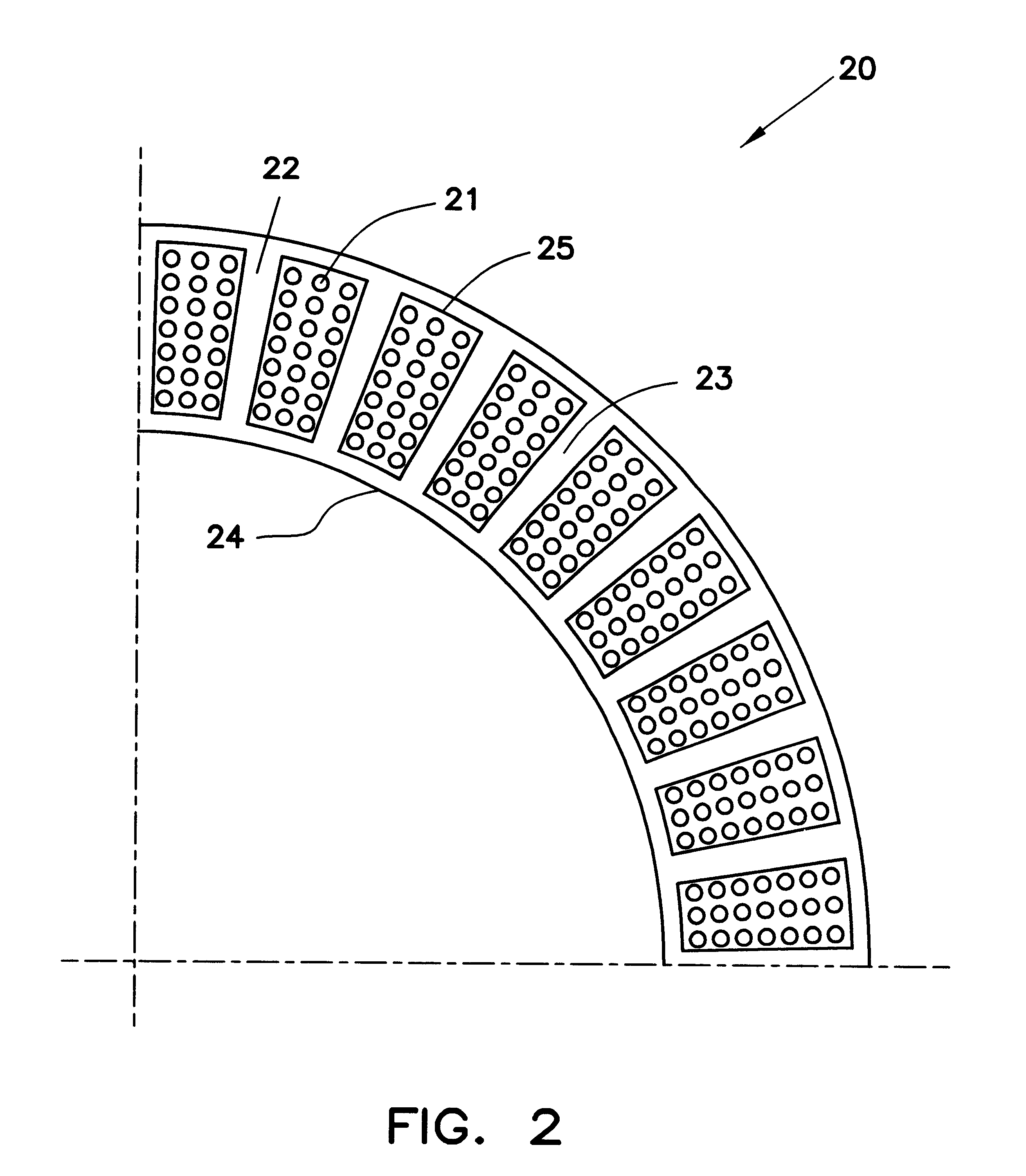Electromagnetic device with embedded windings and method for its manufacture
a technology of embedded windings and electromagnetic devices, which is applied in the direction of stator/rotor body manufacturing, magnetic circuits characterised by magnetic materials, and magnetic circuit shapes/forms/construction. it can solve the problems of affecting the electromagnetic characteristics of stators, affecting the electrical insulation of stator windings, and scrap steel pieces, which are often not used productively by manufacturers
- Summary
- Abstract
- Description
- Claims
- Application Information
AI Technical Summary
Benefits of technology
Problems solved by technology
Method used
Image
Examples
Embodiment Construction
The present invention is a novel method for manufacturing a stator core from powdered magnetic material, and embedding stator windings within the stator core, and a novel powdered magnetic material stator core with embedded stator windings produced by the method.
To better illustrate the advantages of the present invention, it is useful to examine a stator made according to the prior art methods. FIG. 1 shows one-quarter of a cross-section of such a prior art stator. In FIG. 1, stator 10 is shown with a plurality of windings 11 installed in a plurality of slots 12. Stator core 13 is fabricated from a plurality of stacked steel laminations (only the top lamination being shown in FIG. 1). Stator core 13 includes a plurality of teeth 14 which define the slots 12. Windings 11 were shaped into the desired configuration prior to installation into stator core 13. During installation into stator core 13, windings 11 were inserted into slots 12 through slot openings 15.
FIG. 2 shows one-quarte...
PUM
| Property | Measurement | Unit |
|---|---|---|
| Fraction | aaaaa | aaaaa |
| Magnetic structure | aaaaa | aaaaa |
| Volume | aaaaa | aaaaa |
Abstract
Description
Claims
Application Information
 Login to View More
Login to View More - R&D
- Intellectual Property
- Life Sciences
- Materials
- Tech Scout
- Unparalleled Data Quality
- Higher Quality Content
- 60% Fewer Hallucinations
Browse by: Latest US Patents, China's latest patents, Technical Efficacy Thesaurus, Application Domain, Technology Topic, Popular Technical Reports.
© 2025 PatSnap. All rights reserved.Legal|Privacy policy|Modern Slavery Act Transparency Statement|Sitemap|About US| Contact US: help@patsnap.com



